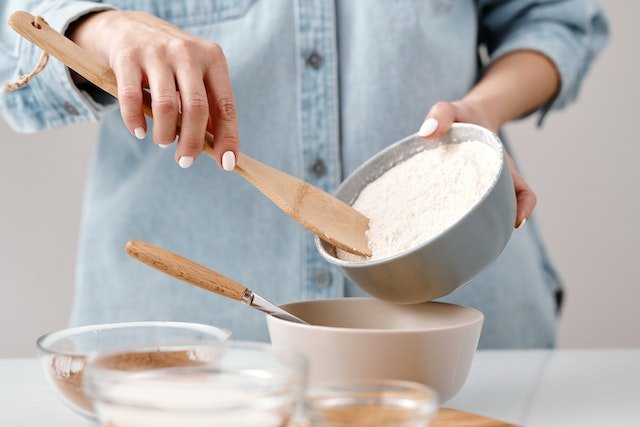Last Updated on January 9, 2024 by Umer Malik
Baking powder is an essential ingredient to have in the kitchen pantry, and understanding what it does can take your cakes and cookies up a notch. It might seem like a mysterious powder considering its role in baking, but this powerful agent has been used for centuries to help lighten, fluffiness, and leaven baked goods! It is an interesting combination of both science and art that creates a consistent rising effect when added to recipes. So if you’ve ever wondered what it really does or why it makes such a difference in our favorite breads and pastries – read on! We’ll dive deeper into how different chemical reactions work within baking powder while exploring intriguing historical facts about its origin.
Table of Contents
Overview of baking powder and its use in baking
Baking powder is an essential ingredient in any baker’s pantry, but what exactly does it do? In short, baking powder is a leavening agent that helps baked goods rise and become light and fluffy. It achieves this by producing carbon dioxide gas when it comes into contact with a liquid, such as milk or water, and heat from the oven. This gas expands and creates air pockets that lift the batter or dough, resulting in a perfectly textured cake, muffin or biscuit. Baking powder is often used in combination with other leavening agents like baking soda to ensure the perfect balance of lift and flavour. Whether you’re a seasoned baker or just starting out, understanding the role of baking powder in your recipes is essential to achieving baking success.
How it works- chemical reaction between baking powder and other ingredients
It is a key ingredient in many recipes that require leavening, or the ability to rise. But what exactly does it do? The simple answer is that it creates carbon dioxide gas, which causes the dough or batter to expand and rise in the oven. This chemical reaction happens when baking powder is combined with moisture, heat, and an acidic ingredient such as yogurt, buttermilk, or vinegar. As the carbon dioxide gas is released, it creates tiny bubbles in the batter or dough, making it light and fluffy. So the next time you whip up a batch of muffins or pancakes, remember that it’s the baking powder that is responsible for their irresistible fluffiness.
Different types
Have you ever wondered what makes your baked goods rise and become fluffy? That’s the magic! It’s a crucial ingredient in many delicious treats like cakes, muffins, and bread. But did you know that there are different types available to use? Single-acting baking powder produces carbon dioxide gas once it’s mixed with liquid ingredients, whereas double-acting baking powder releases gas both during mixing and baking. There are also options for gluten-free and aluminum-free baking powders. Each type has its own benefits and uses depending on your preferences and dietary needs. With so many options available, it’s worth experimenting to find the perfect baking powder for your recipe!
In conclusion, baking powder is an essential ingredient for creating delicious baked goods. Checkout C-Cell for more.
Apart from that, if you are interested to know about Arabic Salad Recipe then visit our Recipes category.
